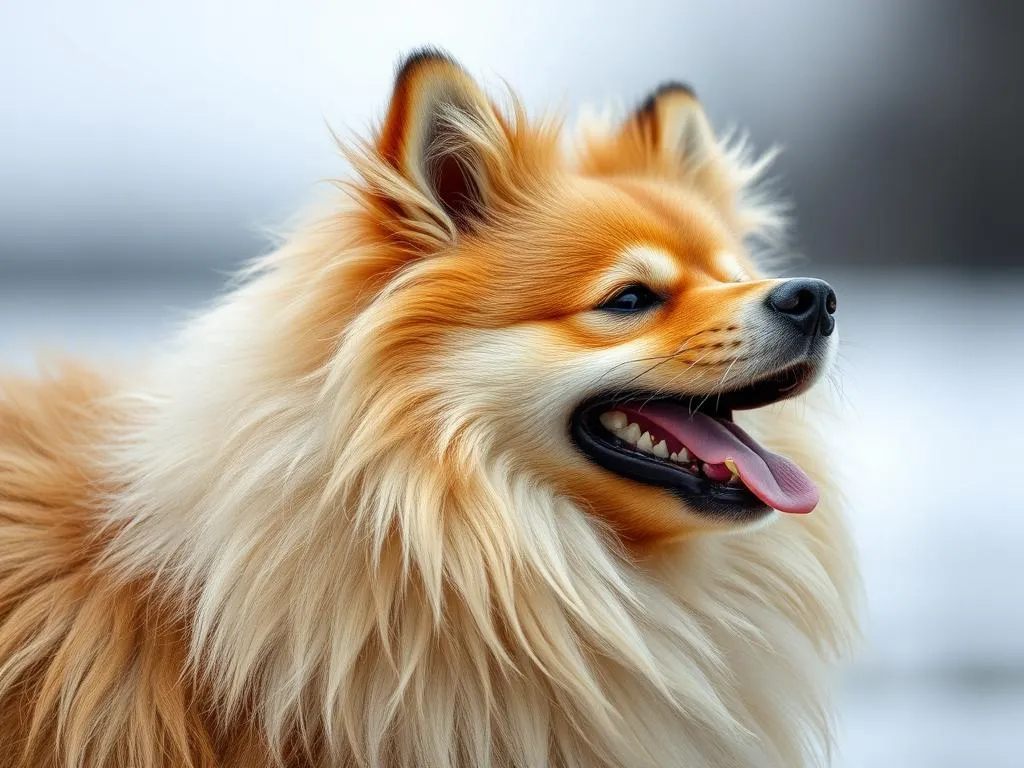
Introduction
Dog breeds are as diverse as the people who love them. From the tiny Chihuahua to the majestic Great Dane, each breed has its own unique characteristics, history, and personality. Understanding different breeds helps potential dog owners make informed decisions about which dog best suits their lifestyle and preferences.
One breed that stands out among the rest is the German Spitz. Known for its striking appearance and lively personality, the German Spitz has captivated dog lovers around the world. This breed boasts a rich history and a range of sizes, making it a versatile companion for various households.
History and Origin of German Spitz
Early History
The German Spitz has ancient roots, tracing back to the Nordic and Germanic regions. These dogs were bred as working companions, originally serving as herders, hunters, and watchdogs. Their lineage is believed to be linked to the Spitz family of dogs, which includes breeds like the Samoyed and the Alaskan Malamute. These ancestors were valued for their intelligence, loyalty, and ability to thrive in harsh climates.
Development of the Breed
Over the centuries, the German Spitz evolved into several distinct types, primarily differentiated by size. The breed gained popularity in Germany during the Renaissance, where it was often depicted in art and literature. Notable milestones in the breed’s journey to recognition include its introduction to dog shows in the 19th century and the establishment of breed standards by national kennel clubs.
Current Status
Today, the German Spitz is recognized by major kennel clubs, including the American Kennel Club (AKC) and the Fédération Cynologique Internationale (FCI). This breed enjoys global popularity, with many enthusiasts in Europe, North America, and Asia. Additionally, regional variations have emerged, each reflecting local preferences and lifestyles.
Physical Characteristics
Size and Weight
The German Spitz is categorized into three size variants:
- Toy German Spitz: 5 to 10 pounds
- Miniature German Spitz: 11 to 20 pounds
- Standard German Spitz: 21 to 30 pounds
These size categories allow for a diverse range of owners to choose a German Spitz that fits their living situation and preferences.
Coat and Color
A hallmark of the German Spitz is its luxurious double coat, which consists of a dense undercoat and a long, straight outer coat. This breed is known for its beautiful colors, including:
- White
- Black
- Brown
- Orange
- Cream
- Grey
Some German Spitz may have unique patterns or markings, adding to their individual charm.
Distinctive Features
The German Spitz is easily recognizable due to its erect ears and plume-like bushy tail that curls over its back. Additionally, its expressive dark eyes give it a keen, intelligent look, making them not only adorable but also captivating companions.
Temperament and Behavior
General Temperament
The German Spitz is renowned for being intelligent, lively, and alert. They possess a playful spirit and are often described as affectionate and loyal. Their friendly demeanor makes them an excellent choice for families, singles, and seniors alike.
Social Behavior
This breed typically interacts well with humans and other pets. German Spitz dogs are known to be sociable and enjoy being part of the family activities. Early socialization is crucial, as it helps them develop good manners and adaptability to various environments.
Training and Intelligence
German Spitz dogs are highly trainable due to their intelligence. They respond well to positive reinforcement techniques and enjoy learning new commands. Here are some tips for effectively training a German Spitz:
- Start Early: Begin training at a young age to instill good habits.
- Use Positive Reinforcement: Reward-based training encourages good behavior.
- Be Consistent: Consistency is key to effective training; use the same commands and rewards.
Health Considerations
Common Health Issues
Like all breeds, the German Spitz is prone to certain genetic health issues. Common concerns include:
- Hip Dysplasia: A hereditary condition affecting the hip joint.
- Dental Problems: Small breeds can be prone to dental issues, so regular dental care is essential.
- Patellar Luxation: A condition where the kneecap dislocates, causing discomfort.
Regular Health Checks
Routine veterinary visits are vital for monitoring the health of your German Spitz. Regular check-ups can catch potential health problems early. It’s also essential to keep up with vaccinations and screenings as recommended by your vet.
Lifespan
The average lifespan of a German Spitz is around 12 to 16 years. Factors influencing longevity include genetics, diet, exercise, and overall healthcare. Providing a loving and healthy environment can help your dog live a long and fulfilling life.
Care and Grooming
Dietary Needs
Feeding a German Spitz a balanced diet is crucial for their health. Depending on their size, the dietary needs vary:
- Toy German Spitz: High-quality small breed kibble tailored for their size.
- Miniature German Spitz: Moderate portions of medium-sized kibble with adequate proteins and fats.
- Standard German Spitz: Larger kibble with a focus on maintaining a healthy weight.
Ensuring fresh water is available at all times is also essential for hydration.
Grooming Requirements
The German Spitz requires regular grooming due to its dense coat. Here are some grooming tips:
- Frequency of Brushing: Brush at least once a week to prevent matting and reduce shedding.
- Bathing: Bathe your dog every 2 to 3 months or as needed, using a gentle dog shampoo.
- Nail Trimming: Regularly check and trim nails to prevent discomfort and maintain proper foot health.
Exercise Needs
To keep a German Spitz healthy and happy, regular exercise is essential. Aim for at least 30 minutes of exercise each day. Activities can include:
- Daily Walks: Short walks around the neighborhood.
- Playtime: Engaging in games like fetch or tug-of-war.
- Social Outings: Visiting dog parks or participating in dog-friendly events.
Living with a German Spitz
Ideal Living Conditions
The German Spitz is adaptable and can thrive in various living situations, whether it be an apartment or a house with a yard. However, they require regular interaction and mental stimulation, making them less suitable for owners who are frequently away from home.
Family Compatibility
German Spitz dogs are great companions for families, including those with children. Their playful nature and protective instincts make them excellent family pets. They are generally good with other pets, but early socialization is key to ensuring harmonious relationships.
Travel and Socialization
Socializing a German Spitz is crucial for their development. Exposing them to different environments, people, and animals helps them become well-rounded dogs. When traveling with your dog, consider the following:
- Safety: Use a secure crate or seatbelt harness.
- Frequent Breaks: Plan for regular stops during long journeys.
- Acclimatization: Allow your dog to explore new surroundings at their own pace.
German Spitz Variants
Types of German Spitz
The German Spitz is categorized into several types based on size, each with its own unique characteristics:
- Klein: The smallest variant, typically weighing between 5 and 10 pounds.
- Mittel: A medium-sized variant, weighing between 11 and 20 pounds.
- Gross: The largest variant, weighing between 21 and 30 pounds.
Each variant shares the same essential traits but differs in size and some physical characteristics.
Comparison with Similar Breeds
While there are several breeds that resemble the German Spitz, such as the Pomeranian and the American Eskimo Dog, they can be distinguished by specific traits. The German Spitz generally has a more robust build and a wider range of sizes compared to these breeds. Understanding these differences can help prospective owners choose the right breed for their lifestyle.
Conclusion
The German Spitz is a delightful breed, characterized by its intelligent and lively nature. From its fascinating history to its charming personality, this breed offers a unique companionship that can enrich the lives of its owners. They thrive in loving environments, making them suitable for families, singles, and seniors alike.
Owning a German Spitz can bring joy and fulfillment, as these dogs form deep bonds with their families. If you’re considering adding a furry friend to your home, the German Spitz may just be the perfect match for you.









